29 Items That Hike Up Your Electricity Bill

Hold on to your wallet. Due to inflation and volatile fuel prices, you’ll see a significant rise in your utility bills.
If you have opened your electric bill only to be shocked by the amount owed, you’ve already seen the change. According to Utility Dive, U.S. electricity prices have outpaced inflation and experts see little chance for rate decreases.
Figuring out how to reduce your electric bill can be as simple as figuring out what’s costing you the most. To do this, you can follow a simple formula to determine how many kilowatt-hours (kWh) a device uses in a month or year and then find ways to cut back where possible.
Read Next: 6 Things the Middle Class Should Sell To Build Their Savings
For You: 9 Things You Must Do To Grow Your Wealth in 2025
Kilowatt-hours measure how much power a device uses in an hour of being turned on. If you look at most appliances, they will supply a wattage or a range of wattages the device operates at — how many watts it burns in an hour. Once you have the wattage, simply divide that by 1,000 (to convert the watts to kilowatts) and then multiply by how many hours a day you use the item. That will give you a basic figure for how many kilowatt-hours a day with that item.
From there, you can use the U.S. Department of Energy’s number for the average U.S. utility rate of $0.17 per kWh, or you could get more specific and get your rate straight from your energy provider.
Based on your costs, you can determine which appliance or device is the actual energy vampire and which isn’t using much electricity.
Here are some changes that will save you a significant amount of money on your electric bills.

Random Energy Suckers
Certain devices still suck power even after they’re turned “off” — and that’s a major issue.
You need to know how many continue drawing power even when not on, including devices like your computer, video game consoles, instant-on TVs, surround sound systems or even cable and satellite TV boxes. For that matter, anything with a built-in digital clock is pulling a little juice.
Here’s a stifling stat: According to the U.S. Department of Energy, 75% of energy use comes from when the appliance is turned off. Energy vampires can cost you an extra $250 or more a year.
Check Out: I’m a Financial Advisor — 5 Things the Middle Class Wastes Money On
Learn More: 9 Things the Middle Class Should Consider Downsizing To Save on Monthly Expenses

Fish Pond Equipment
Average Wattage: 24 to 590
Cost per Year: $4 to $879
Although you likely can’t pull the plug on your fishpond (unless it’s not currently housing fish), consider investing in an energy-saving pump to reduce energy costs.
Explore More: Average Monthly Expenses by Age — Which Group Is Spending the Most?

Hot Water Recirculation Pump
Average Wattage: 28 to 92
Cost per Year: $42- to $137
Plug your hot water recirculation pump into a timer and program it to switch the pump off when no one is typically using hot water, like in the middle of the night.
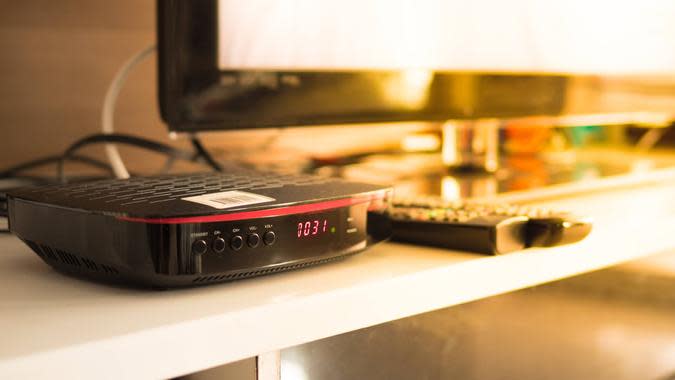
Set-Top Box
Average Wattage: 27
Cost per Year: $40
To cut your energy usage, consider unplugging boxes that aren’t used regularly, such as a box in a guest bedroom.
For the boxes you use regularly, consider plugging the entire entertainment system (set-top box, TV, speakers, etc.) into a power strip to turn off the whole thing at once.
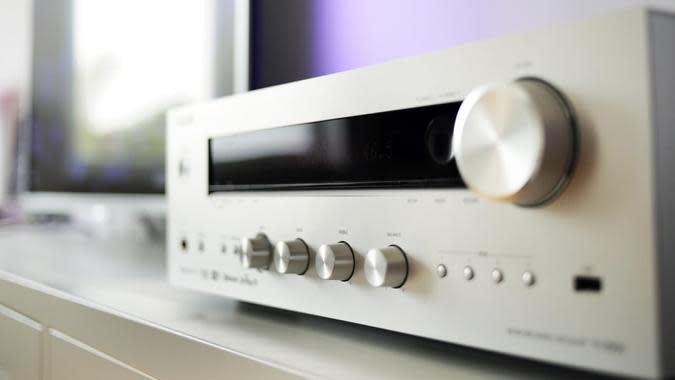
Audio/Visual Gear
Average Wattage: 100 to 200
Cost per Year: $150 or more
Audio devices like amplifiers, stereos, boom boxes and internet radio receivers are easy enough to unplug when not in use. This simple act can save you $150 a year or more.

Fans
Average Wattage: 33
Cost per Year: $50
Unplug fans when not in use, and switch to a fan with a timer so that it doesn’t stay on all night while you sleep.
Read Next: 5 Unnecessary Bills You Should Stop Paying in 2024

24/7 Lights
Average Wattage: 60
Cost per Year: $89
There’s no need to keep a light on when you are not using it. Switch off lights when not in use or put them on a timer so that they shut off automatically.
Additionally, LED light bulbs use considerably less energy: 10 watts vs. 60.

Television
Average Wattage: 5 to 150
Cost per Year: $4 to $112
If you leave your TV on 24/7, you’ll spend an average of $223 per year powering it. Unplug any TVs you don’t regularly use, such as one in a guest bedroom. You should also adjust the power setting on your TV.
Consider disabling your TV’s “quick start” setting to save on energy.

Aquarium
Average Wattage: 63
Cost per Year: $94
The main culprit of energy usage in your aquarium is the heater.
Although you might not be able to unplug it depending on the optimum temperature for your fish, consider insulating the tank and placing it in a well-heated room to cut heating costs. If you have an aquarium light, unplug it when not in use.

Desktop Computer
Average Wattage: 60 to 300
Cost per Year: $89 or more
Your computer doesn’t draw a ton of power, even when it’s on, with a typical desktop costing you about a penny an hour. However, even pennies can add up.
Plug your computer, monitor, printer, computer speakers and other computer accessories into a single power strip that can be turned off when not in use. Let your computer go to sleep after a maximum of 30 minutes of inactivity and turn your computer off whenever you’ve finished using it.
Trending Now: Warren Buffett — 10 Things Poor People Waste Money On
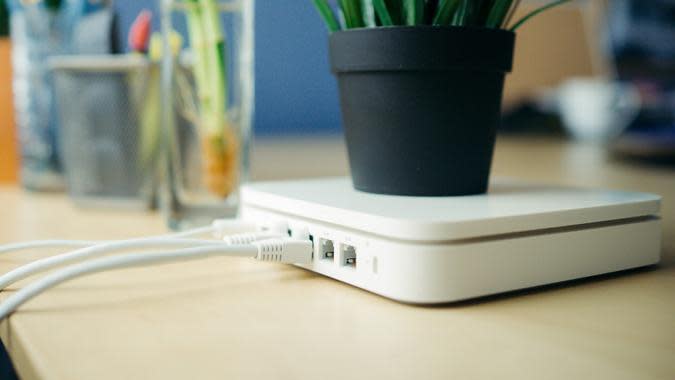
Modem
Average Wattage: 10
Cost per Year: $15
Unplug your modem before going to bed. You don’t need internet access when you’re asleep.

Cellphone Chargers
Average Wattage: 5
Cost per Year: $7
Leaving that charger plugged into an outlet all day still uses 0.1 to 0.5 watts per hour. That is also not a lot, but it’s pure waste. If you have a charger plugged in 24/7, you’re costing yourself.

Video Game System
Average Wattage: 90
Cost per Year: $22 or more
Video game consoles are another common energy vampire.
These devices often remain connected to the network even when they are not in use and are set to be in default “instant on” mode — a mode that was disabled in Europe due to the E.U.’s standby energy standards, the National Resources Defense Council reported.
Unplug your game consoles when not in use and disable the “instant on” mode if you don’t need it.

Laptop Computer
Average Wattage: 30 to 200
Cost per Year: $15
Most laptop cords have a “brick,” a large box that uses energy continuously whenever it’s plugged in. They use about two watts per hour in sleep mode. Simply shutting your laptop or turning it off won’t stop it from using energy.
Unplug the cord from the wall every time you’re not using your laptop to ensure it’s not draining energy you aren’t even using.
Be Aware: 10 Things the Middle Class Won’t Be Able To Afford in Less Than a Decade

Major Energy Suckers
The following appliances and electronics use even more substantial amounts of energy and stay unplugged when not in use, or you should try to use these items in smarter ways to lower the energy you’re using.

Central Air Conditioning
Average Wattage: 3,000 to 3,500
Cost per Kilowatt Hour: $0.51
This is the granddaddy of them all when it comes to inflating your utility bill. Keeping your home cool in the summer is appealing, but it comes with a luxury price tag.
Make sure you are using your system effectively by adjusting the temperature appropriately, closing off areas of the house that aren’t being used and shutting the system off completely when no one is home. Unplug the system during the cooler months to prevent it from using idle energy.
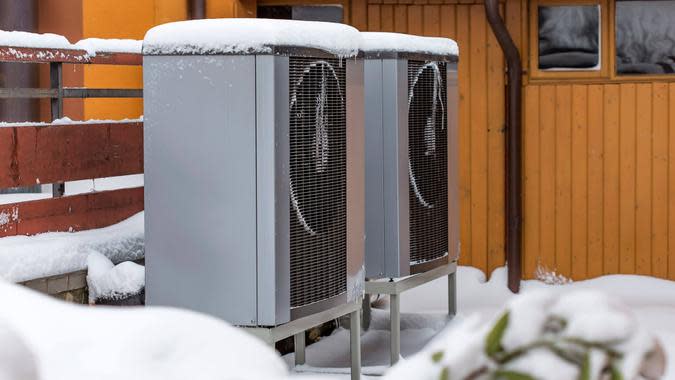
Heat Pump
Average Wattage: 545 to 7,500
Cost per Month: $59 or more
Heat pumps can be more cost-effective than baseboard heating, but use the right pump for your home and your climate. Shutting off heat or cooling to rooms that aren’t being used will also help keep your energy costs down.
That said, a heat pump often surpasses central air in terms of the impact on your utility bill. A heat pump uses about 4,700 watts of power, translating to a cost of about $16.92 to run it all day or nearly $508 if you have it on nonstop for a full month in the winter. Consider turning off your heat pump when you’re not home and keeping it unplugged during warmer months.

Water Heater
Average Wattage: 1,125
Cost per Hour: $0.56
Fortunately, your water heater doesn’t run all day long — it runs only when it’s actually heating water. The less hot water you use and the lower the water’s temperature, the less energy your water heater uses. So while the hourly energy draw is higher than your air conditioner, you’ll most likely run it a lot less — around two hours per day, which would come out to about $34 per month.
It would be a lot of effort to plug and unplug a water heater device constantly, but there are other ways to save on energy costs without having to do this. Adjusting your water heater to the lower temperature setting will save energy. Make sure you are using hot water efficiently by only running the dishwasher when it’s full and only using hot water to wash clothes when it’s absolutely necessary.
Explore More: If You’re 55+, Here Are 10 Senior Discounts You Are Missing Out on

Clothes Dryer
Average Wattage: 3,000
Cost per Year: $22.35
To reduce your costs, make sure you’re only drying a full load of clothes and use the drying sensor if you have one, rather than the timed drying option.
If the weather cooperates, hang sheets outside to dry. You’ll save money and, as a little treat, you’ll also get that fresh, outdoor smell. You can unplug this appliance when not in use.

Well Pump
Average Wattage: 1,400
Cost per Year: $521
Well pumps run, on average, six to eight hours per day. Although you might not be able to unplug it, to save money when running your well pump, make sure you have the right type of pump for your home and that it’s only running when it needs to be.

Space Heater
Average Wattage: 1,500
Cost per Hour: $0.25
Rather than using a space heater to keep a space warm, address the underlying issue. You might need additional insulation in the room you’re trying to heat, or you might be able to block drafts by sealing around doors and windows. And, as always, a sweater or a blanket should be your go-to zero-cost way to warm up.
If you use a space heater, be sure to unplug it when not in use and set it on a timer to turn off when you are sleeping.

Hair Dryer
Average Wattage: 1,500 to 2,000
Cost per Year: $47
You can reduce your costs by reducing usage or letting your hair air dry first — and then using the dryer just for styling. Using the low setting instead of high will reduce your energy usage as well. It’s also an easy enough tool to keep unplugged when you’re not using it.
Find Out: 5 ‘Necessities’ Frugal People Don’t Buy, According to Frugal Living Expert Austin Williams

Electric Range
Average Wattage: 1,000 to 3,000
Cost per Hour: $0.17
Your electric range uses about 1.9 kW per hour, but that will vary widely depending on how many burners you’re using and at what intensity. Either way, even if you’re cooking for three hours a day every day, you’re still spending about $29 a month on energy for your stove.

Refrigerator
Average Wattage: 28 to 77
Cost per Hour: $0.04 to $0.12
There are some tips that can help lower your electricity bill without turning off the fridge. Keep foods covered as the moisture released by foods makes the compressor have to work harder. If you’re in the market for a new refrigerator, make sure you get one that’s the right size for your family — a full refrigerator uses less energy than one that’s half-empty. And of course, decide what you want before you open the fridge to minimize the time the door’s open.
If you have more than one refrigerator, consider consolidating your refrigerated items so that you can keep the second one unplugged at most times. You might also consider getting rid of a second fridge altogether, especially if it’s older.

Ceiling Fan
Average Wattage: 75
Cost per Year: $37
One great tip in climates with cooler nights is to turn on your ceiling fans in the evening while keeping your windows open. The fans can draw in cool air all evening that will help keep the home cool into the next day. You can keep ceiling fans unplugged during cooler months, or if it’s hardwired, be sure to keep it turned off.
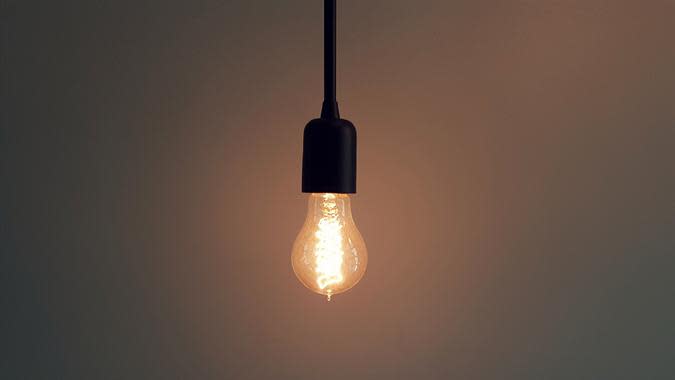
Incandescent Light Bulb
Average Wattage: 60
Cost per Year: $7.44
A 60-watt incandescent light bulb uses 60 watts of power an hour. However, the better question might be, “Why are you still using incandescent bulbs?”
Using newer CFL bulbs will save you a lot in the long run — both on your energy bill and on your trips to the hardware store. Compared to a 60-watt incandescent bulb, a 15-watt CFL bulb uses a quarter of the energy and lasts 10 times as long while a 12W LED light uses as little as one-fifth as much energy and lasts 25 times as long.
Discover More: I’m a Bank Teller — 4 Reasons You Should Withdraw Your Savings Right Now
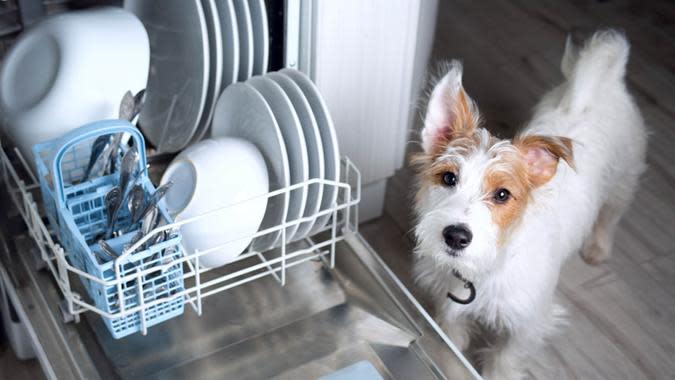
Dishwasher
Average Wattage: 1,800
Cost per Year: $330.48
Even if you don’t keep your dishwasher unplugged when not in use, there are ways to reduce its energy costs. Running your dishwasher only when it is full will help you save energy, as will finding opportunities to hand-wash dishes when there aren’t enough to warrant running the dishwasher.
Household appliances are becoming more efficient all the time, so look for the most efficient model when it’s time to replace your refrigerator, dishwasher, laundry pair or other appliance. Replacing an old appliance, even if it’s still working, may make economic sense if the energy savings are there.
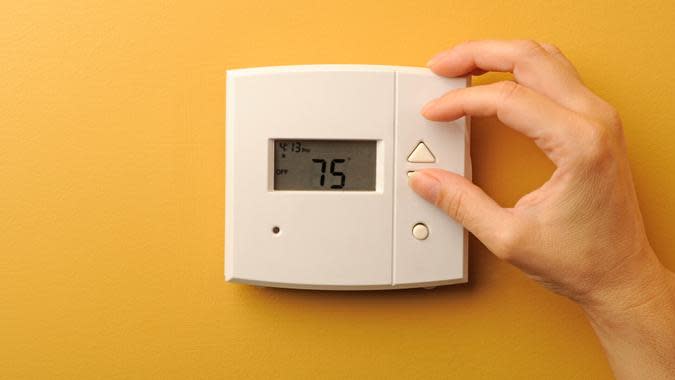
Furnace Fan
Average Wattage: 400
Cost per Hour: $0.07
Unplug your furnace during the summer if you can. If it’s hardwired, be sure to switch it off.

Coffee Maker
Average Wattage: 1,300
Cost per Hour: $0.22
Your coffee maker requires a lot of energy while in use, so it’s best to keep it unplugged when it isn’t. If you have an instant coffee maker, keep it plugged into a timer to save on its standby energy load costs.

Microwave
Average Wattage: 800 to 1,000
Cost per Hour: $0.14
It’s no surprise that a microwave oven uses a lot of energy when you’re heating up an entire meal in a matter of minutes, but it also uses energy when it’s not working. All appliances with a clock use idle energy, and a microwave is no exception.
Chances are you can easily see the time on your watch or mobile phone when you’re in the kitchen, so there’s no need to have your microwave plugged in 24/7.
Read More: 5 Frugal Habits Suze Orman Still Follows Even Though She Can Afford Almost Anything

Laser Printer
Average Wattage: 250
Cost per Hour: $0.04
Your laser printer is probably in standby mode more than it’s actually in use, so it can be easy to overlook this energy vampire. Simply unplug your printer when you’re not using it.
Cynthia Measom, Sam DiSalvo, Gabrielle Olya and Amen Oyiboke-Osifo contributed to the reporting for this article.
More From GOBankingRates
I'm a Financial Advisor: My Wealthiest Clients All Do These 3 Things
3 Things You Must Do When Your Savings Reach $50,000
9 Things You Must Do To Grow Your Wealth in 2025
This article originally appeared on GOBankingRates.com: 29 Items That Hike Up Your Electricity Bill


